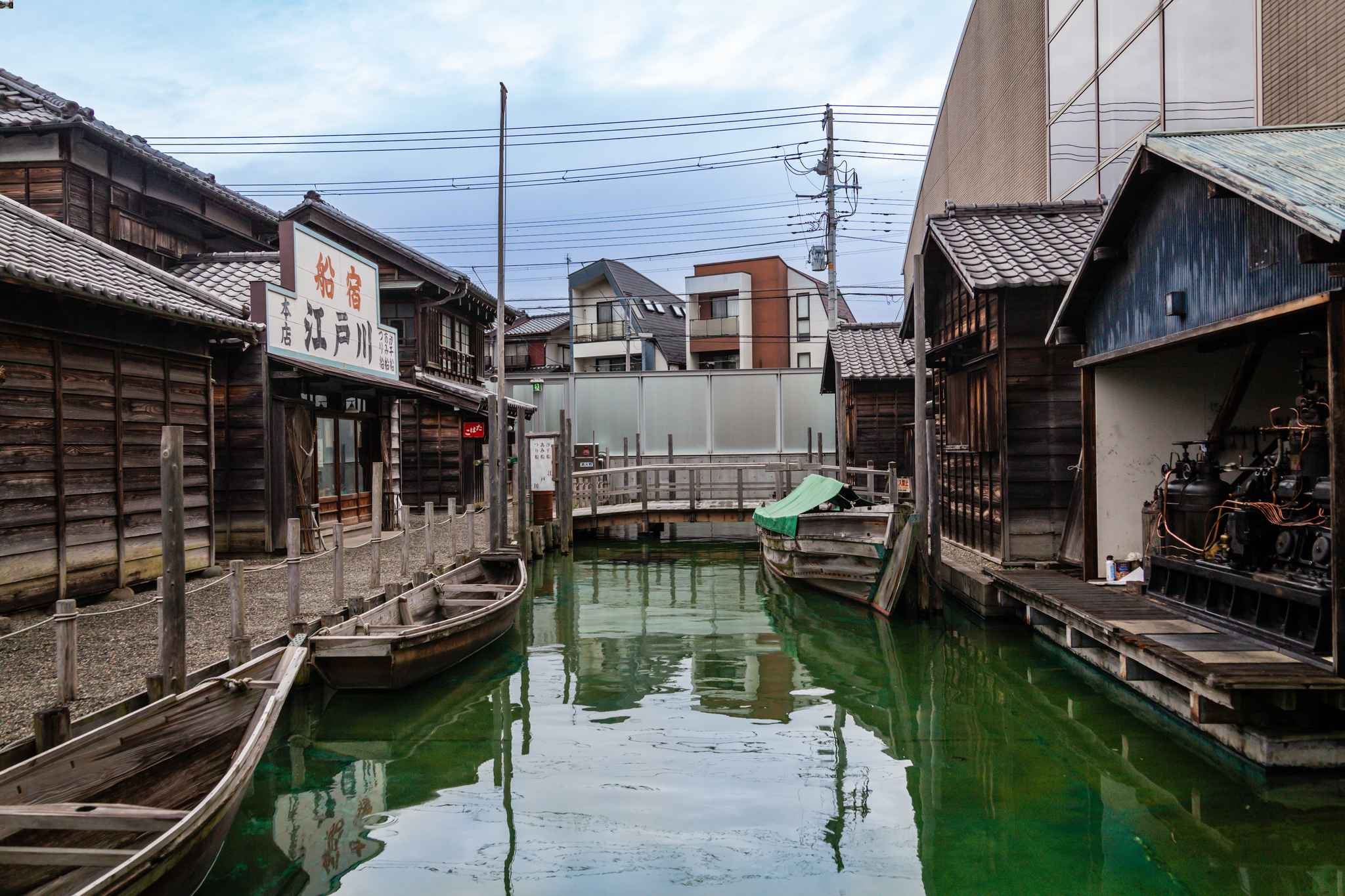Sustainable tourism, societal impact, and culture and legacy preservation are crucial aspects of modern travel. As we explore new destinations and experience different cultures, it’s important to consider our impact on the places we visit. As Japan’s borders recently reopened and the tourist wave is returning in full force, the need to reflect on these values is paramount to encourage the development of sustainable tourism, seeking to minimize negative impacts on the environment and support local communities.
Under this framework, Tokyo and Around Tokyo has been promoting, through social media, those extraordinary destinations, in and around the Japanese capital, that embody these values and bring something new perspectives for the next Japan traveler. So here is a selection of four places in Saitama, Chiba, Tokyo, and Kanagawa prefectures.
Best of all, visitors to Tokyo can access these places using discount passes offered by Japan Rail (JR), making travel quick and convenient.
- Fueki Shoyu: Preserving the Traditional Soy Sauce Brewing Process in Saitama Prefecture
- Urayasu City Folk Museum: Keeping History Alive in Chiba Prefecture
- Avatar Robot Café DAWN ver.β: Robotic Technology with the Most Humane Twist in Tokyo
- Sankeien Garden: The Timeless Cultural Legacy in Kanagawa Prefecture
- Use the JR Pass to Save Money On Your Trip
Fueki Shoyu: Preserving the Traditional Soy Sauce Brewing Process in Saitama Prefecture
Fueki Shoyu is a 230-year-old soy sauce brewing company located near Kawagoe, fittingly Saitama’s charming Little Edo. They pride themselves on following traditional brewing methods to create a top-quality product using only carefully selected whole soybeans, wheat, and sun-dried salt. Sure enough, they do not rush their craft: their soy sauce is slowly fermented in large cedar vats for one to two years, creating a profound aroma and mellowness that has distinguished them over the generations. Visitors can learn about the craft and the brewing process at the Kinbue Soy Sauce Park, a commemorative project opened in November 2019 to celebrate the company’s anniversary.
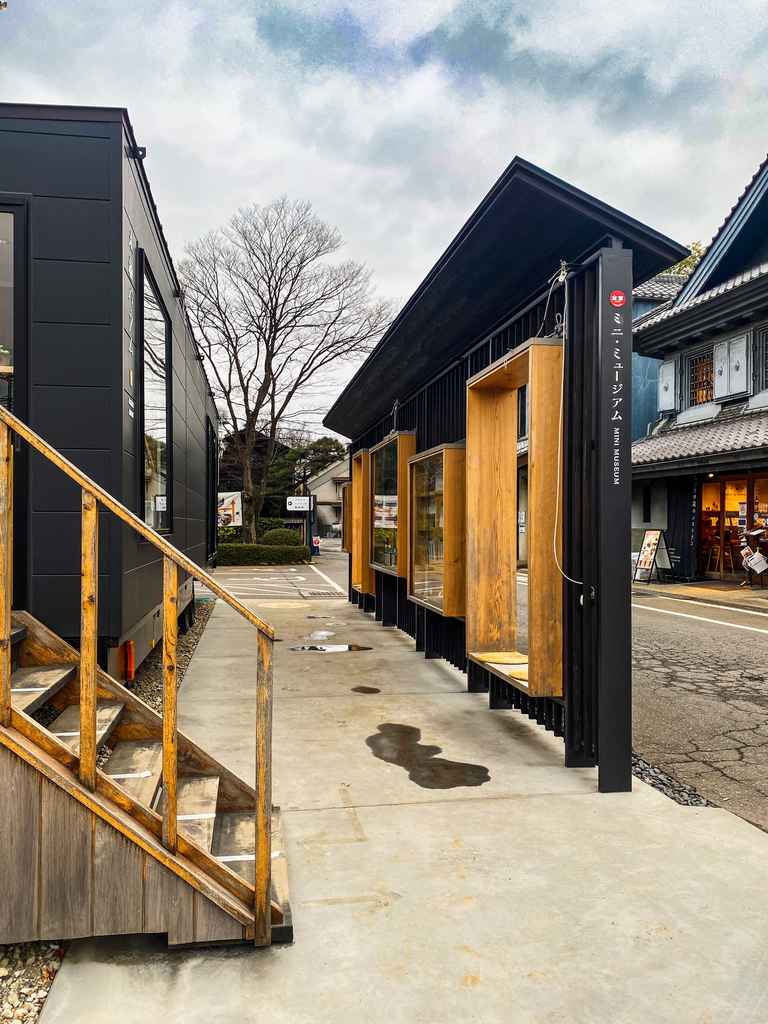
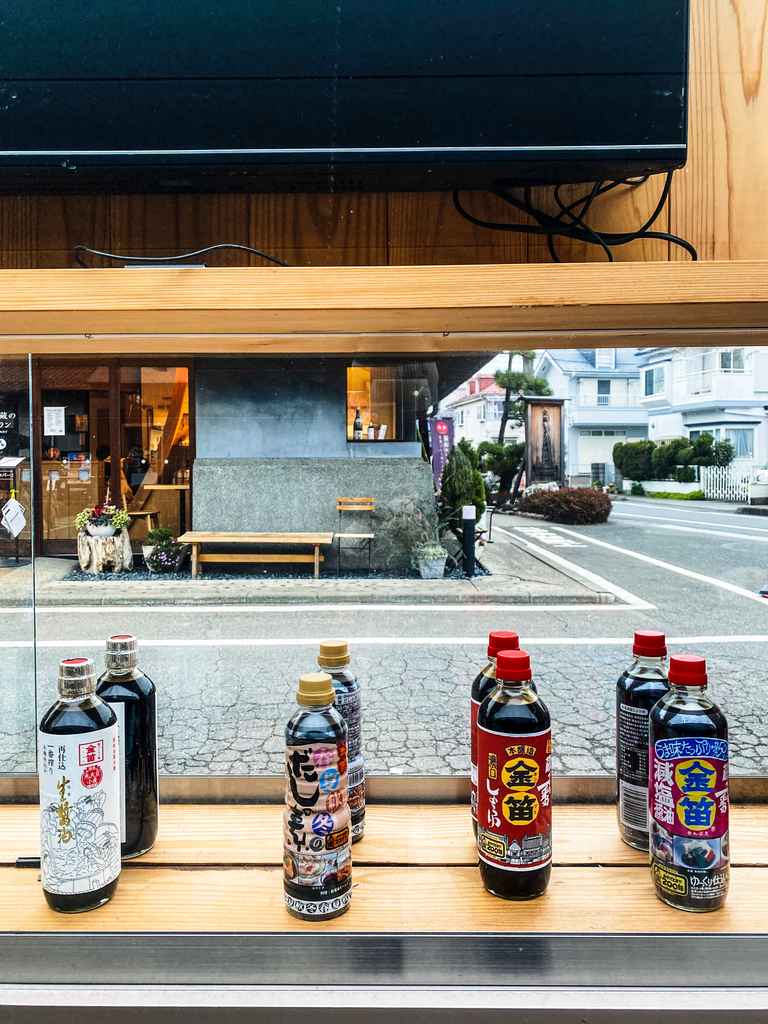
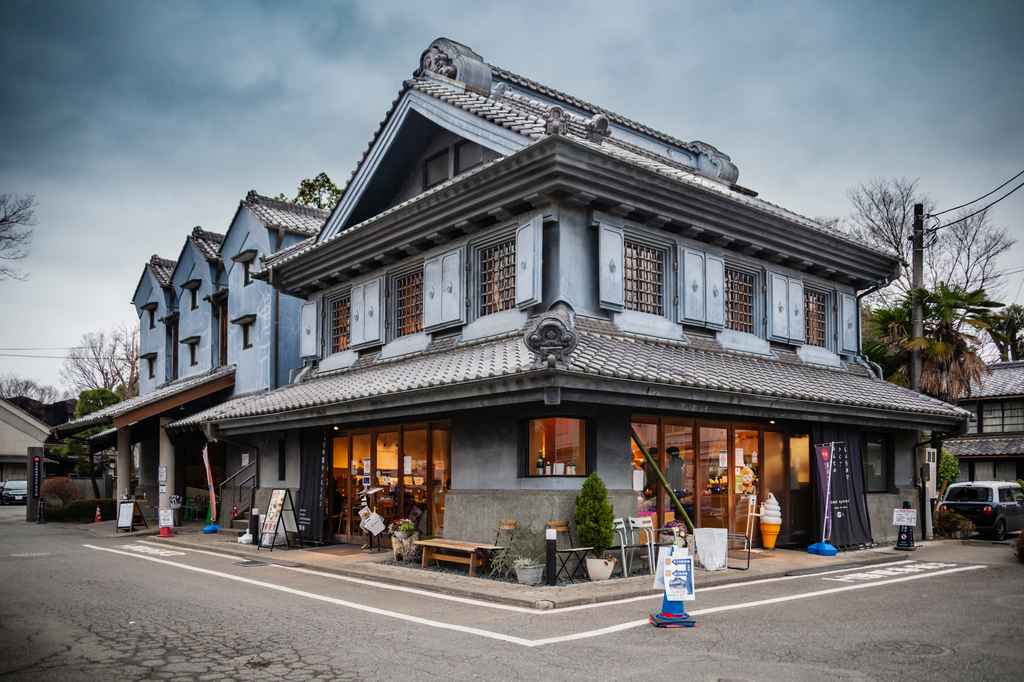
Kichigoro Fueki, the 12th-generation head of Fueki Soy Sauce, oversees the guided visits. Championing his product like no one else would, his passion for explaining every step of the craft is truly infectious and, frankly, part of the joy of the visit. It’s no wonder that the company’s dark soy sauces, Kinbue Shoyu and Kinbue Marudaimame Shoyu, have been well-received over the years. Kinbue reduced-sodium soy sauce, which uses a unique technology to reduce salt by 50% while maintaining the original flavor, and Kinpue re-fermented soy sauce, which is brewed twice, have also gained popularity in recent years. However, a long-standing establishment doesn’t mean that success will come for granted.
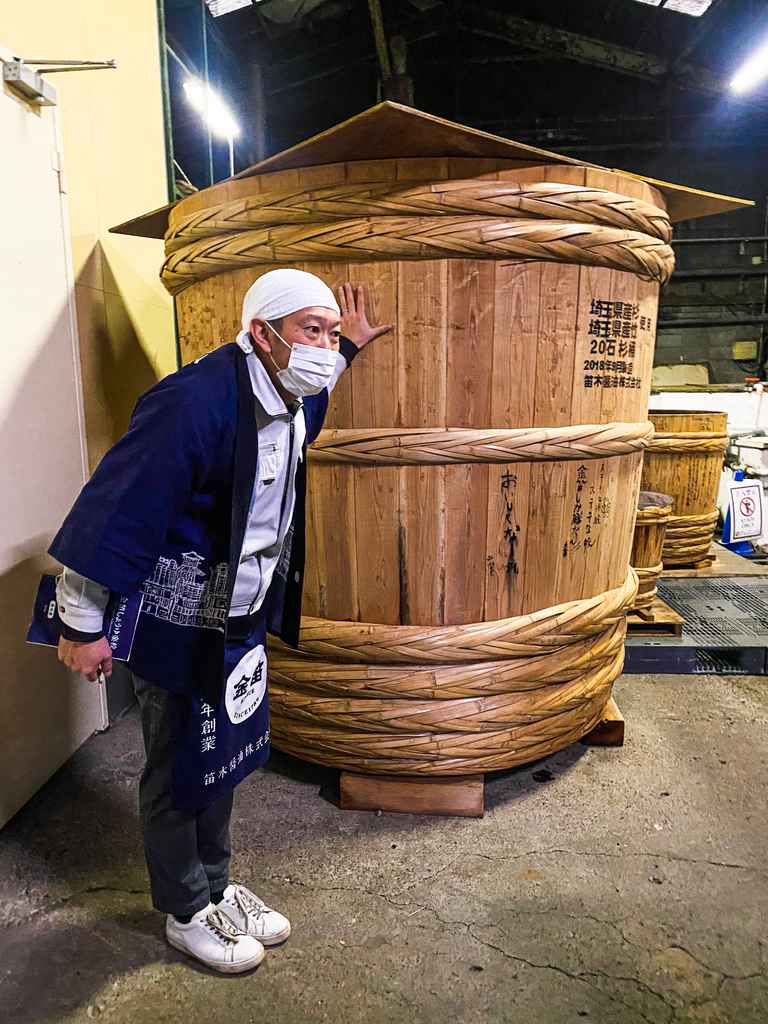
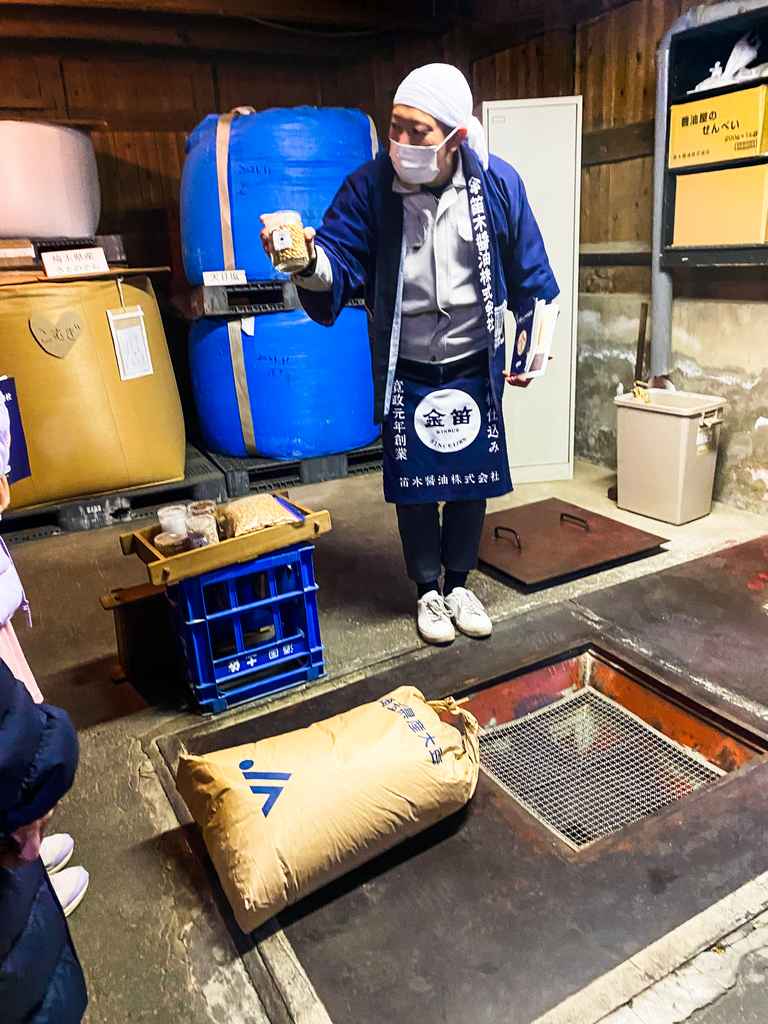
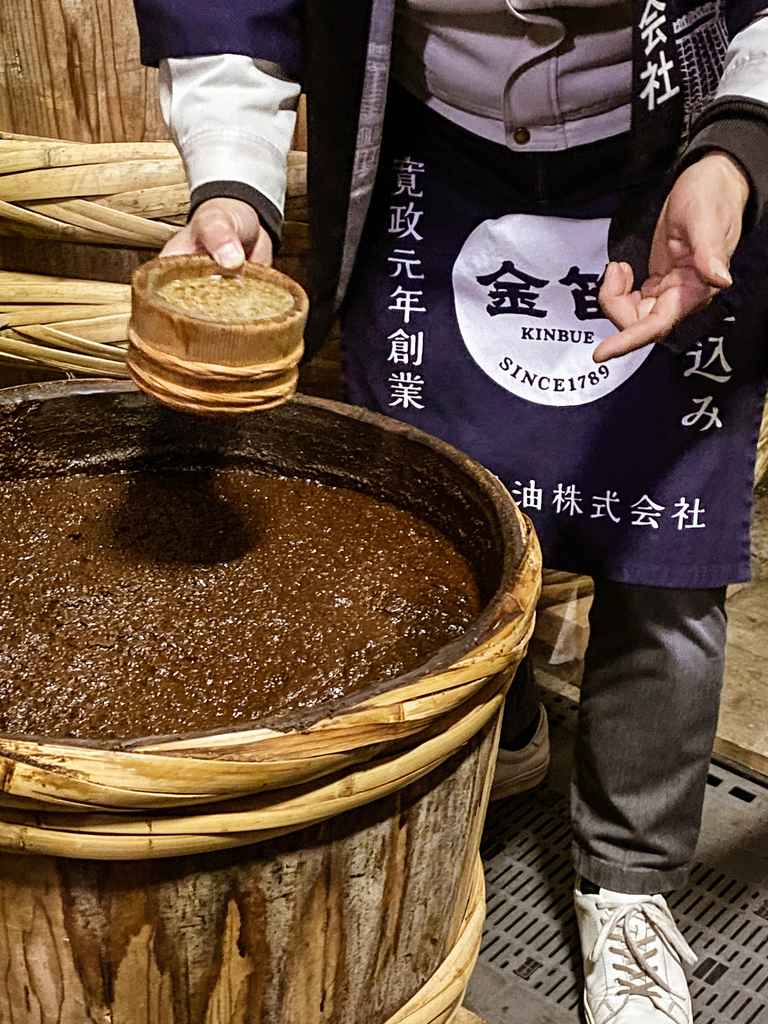
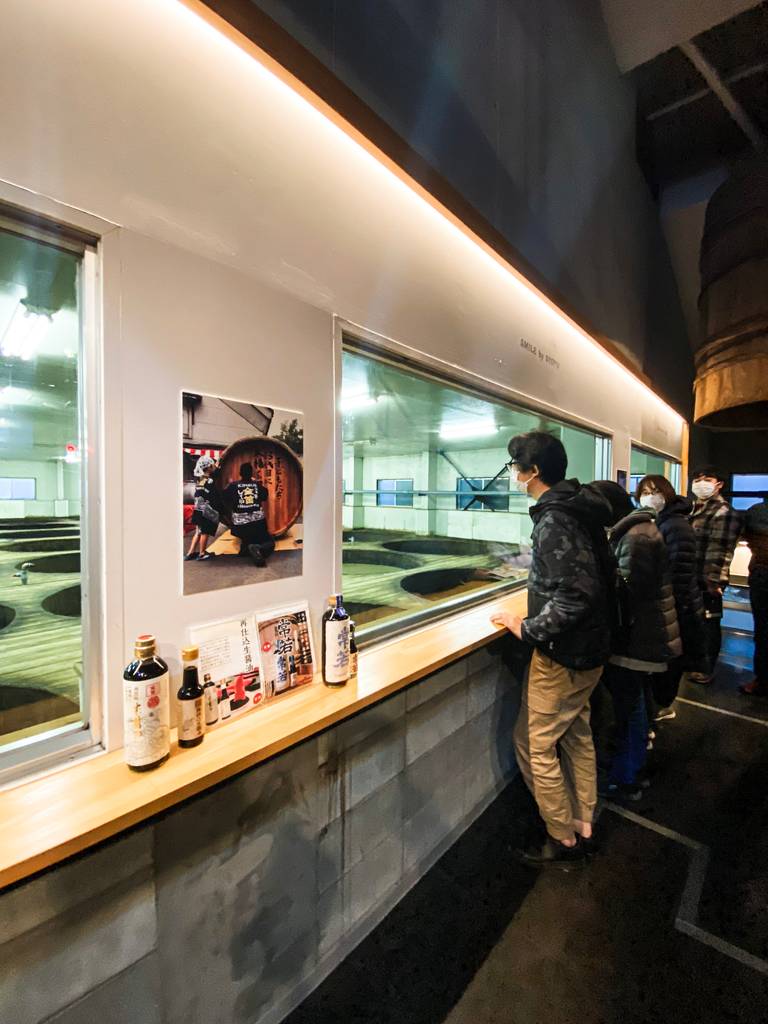
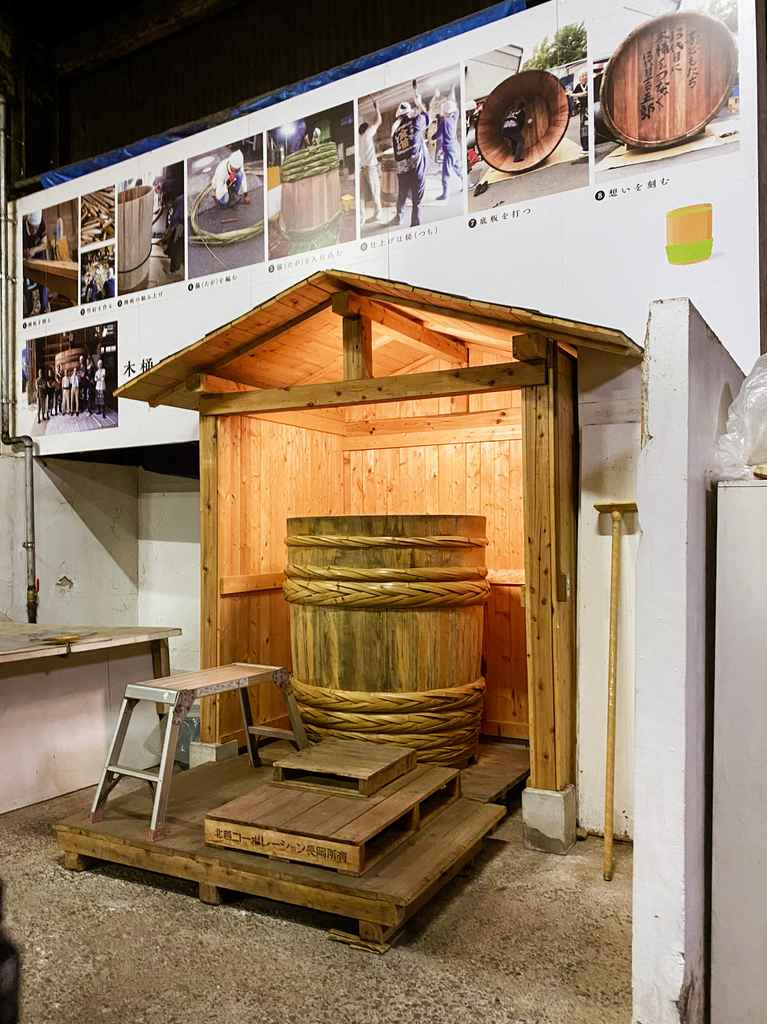
Fueki Shoyu’s success is also the story of Kichigoro Fueki’s resilience and hard work. His father, the 11th head of the family, died suddenly when Kichigoro was in high school, and still unprepared to take over the family business, and thus his uncle became the president, facing tough market conditions at the time. Kichigoro became the president in 2017 after his uncle’s passing. He assumed the name Kichigoro XII upon the completion of “Shin Oke Hatsushibori,” a special craft soy sauce made in a new vat, which he prepared for the first time in half a century in 2018. He’s acutely aware that quality cannot be compromised and in a global market context, the rise in popularity of Japanese ingredients is also an opportunity to get noticed as a gourmet ingredient on a wider scale.
Urayasu City Folk Museum: Keeping History Alive in Chiba Prefecture
Along the shores of Tokyo Bay, Urayasu (浦安市) is a small city best known for one of the most popular theme parks in Japan. But beyond the glitter of this entertainment empire lies a rich history that tells the story of the city’s humble origins. This small village was incorporated as a small fishing village in 1889 and grew from a population of fewer than 6,000 people living and working on developing fishing and seaweed harvesting industries and modernization into a thriving seaside hub by the turn of the century.
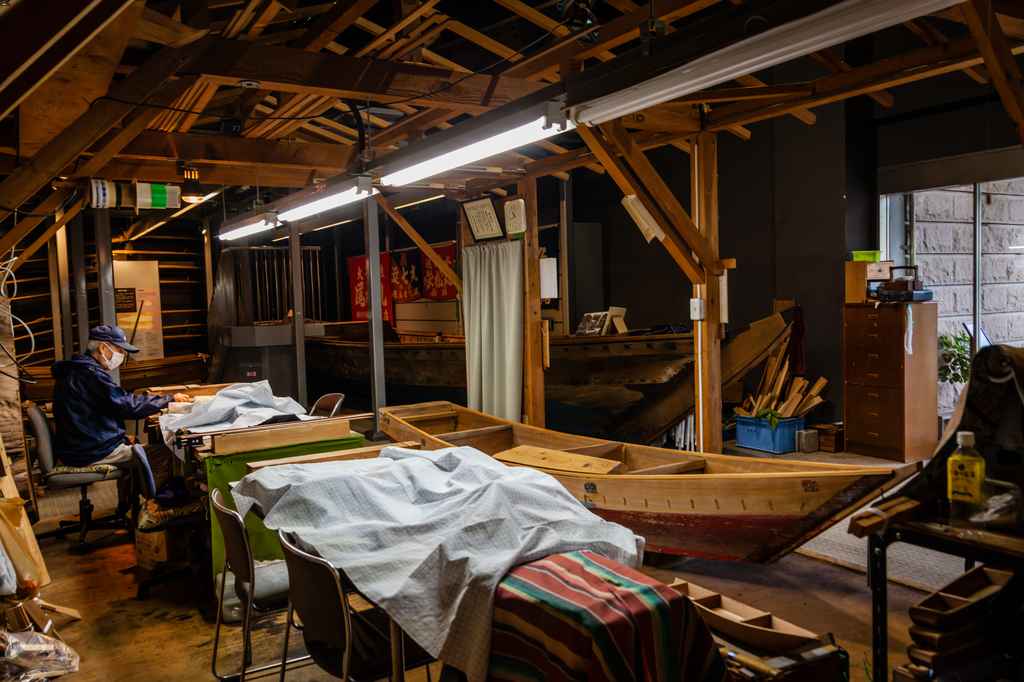
Over the second half of the 20th century, Urayasu transformed once again to reflect modern Japan. The fishing grounds turned into reclaimed land, and the ferry routes connecting Urayasu to Tokyo were replaced by railways and freeways. Despite the transformations, the Urayasu City Folk Museum (浦安市郷土博物館) reflects the old fishing community and offers a chance to transport visitors into a world from a bygone era. The museum provides a learning experience and regular workshops for visitors to experience the city’s heritage. But its most interesting highlight is an open-air recreation of the old fishing town as it was in 1952, inviting visitors to walk along seashell streets, wander through old wooden buildings, and immerse themselves in a living, breathing model of old Japan.
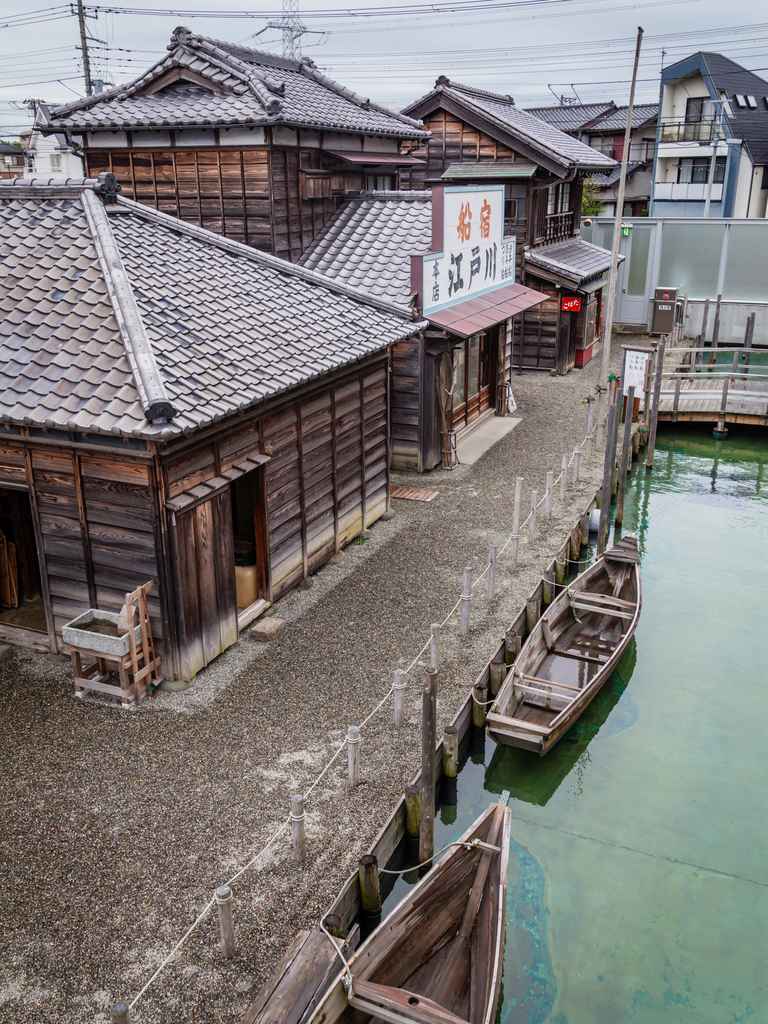
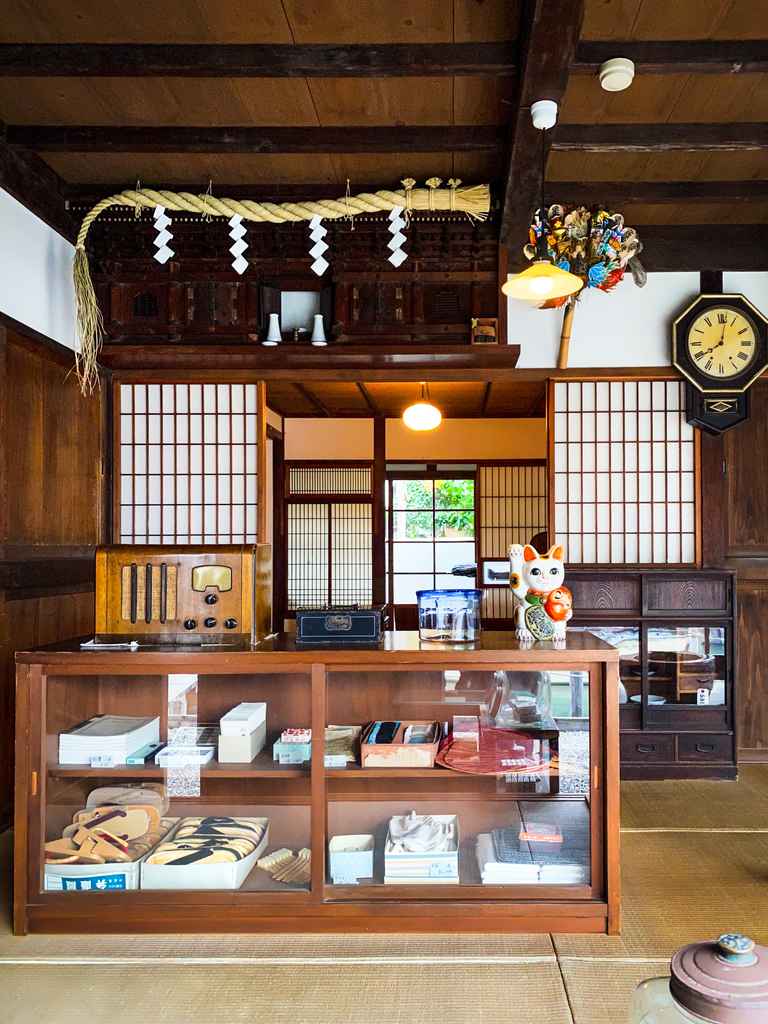
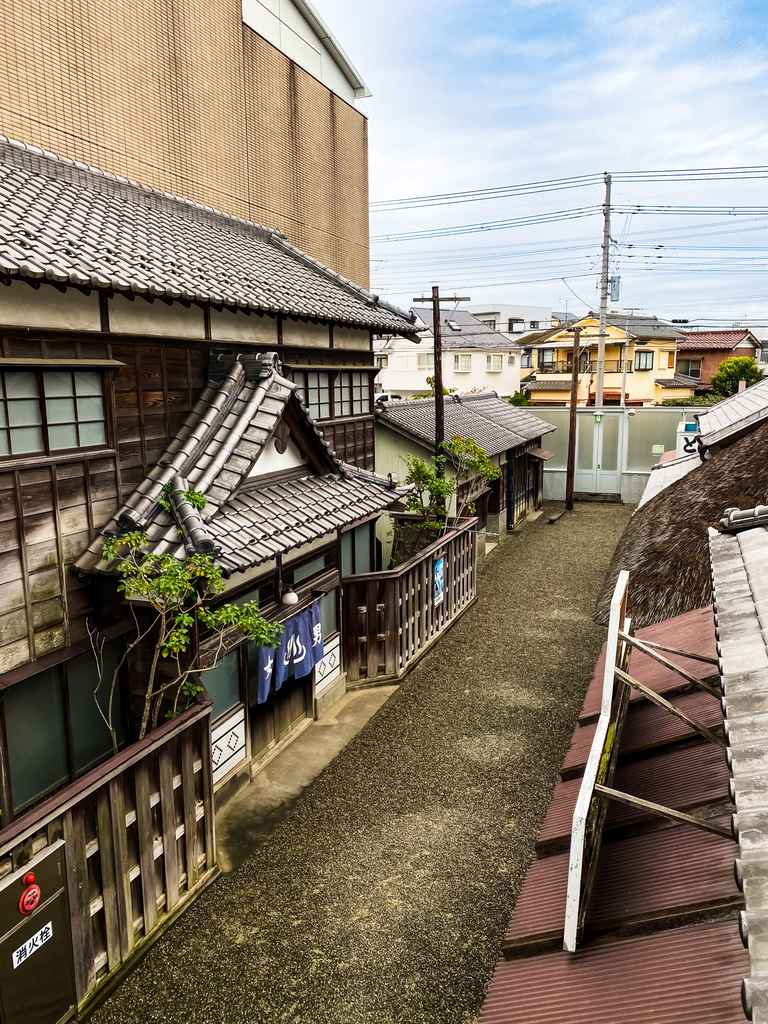
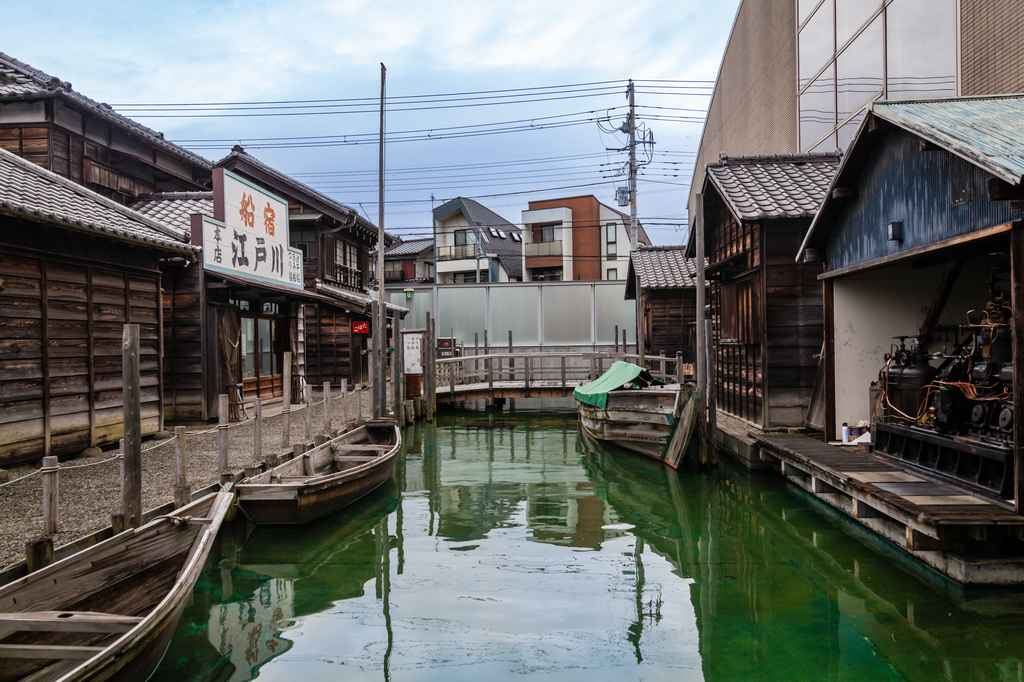
The ichibandori, the main street of old Urayasu, boasts a fish shop, tofu shop, and tempura restaurant. This is no mere simulation: these are all businesses that once existed in Urayasu. Inside the main buildings, exhibits give visitors an understanding of what daily life was like in old Urayasu. Visitors can see models of fishing boats and the tools used to make them, as well as the equipment used for harvesting food from the sea and preparing it for consumption.
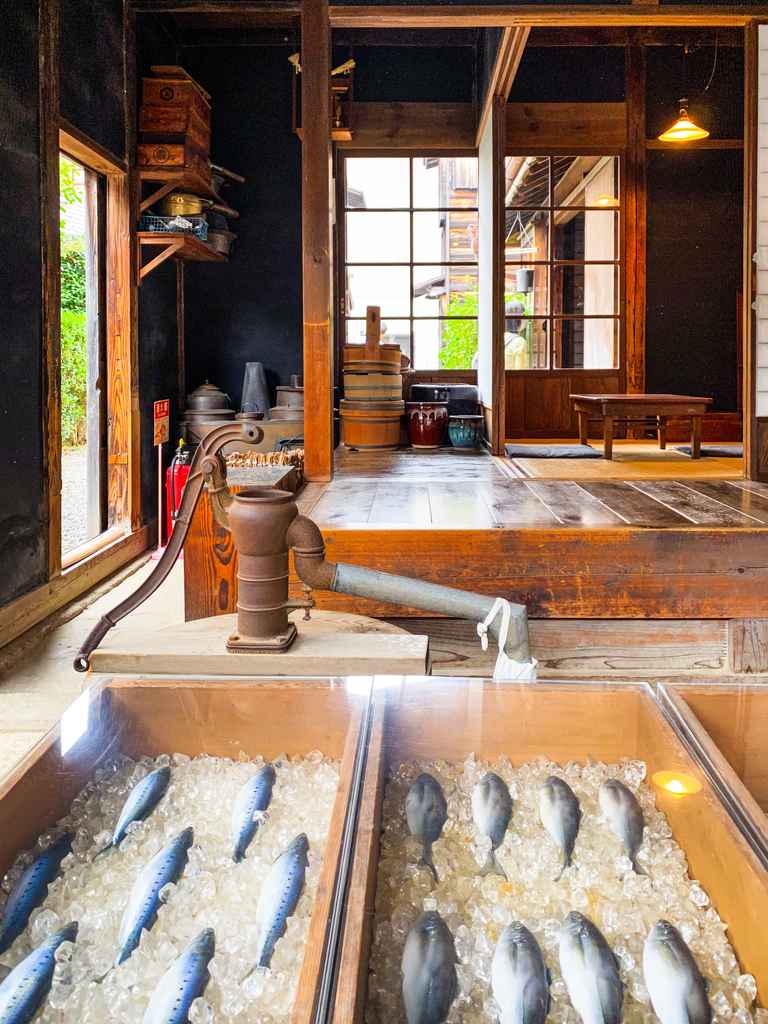
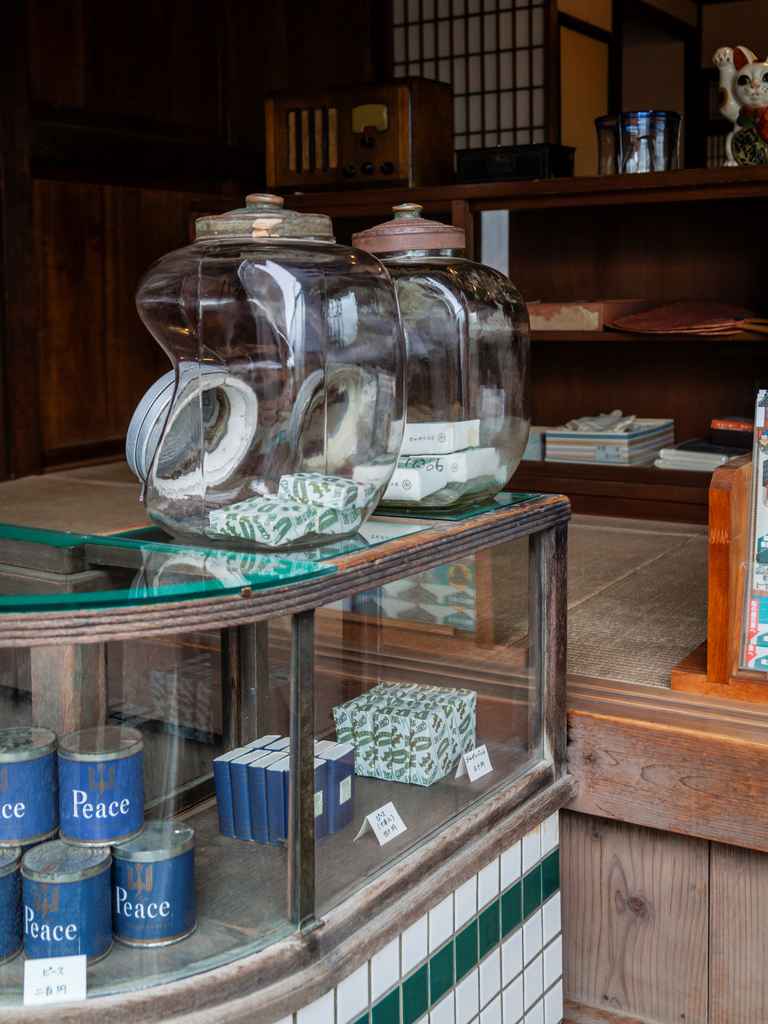
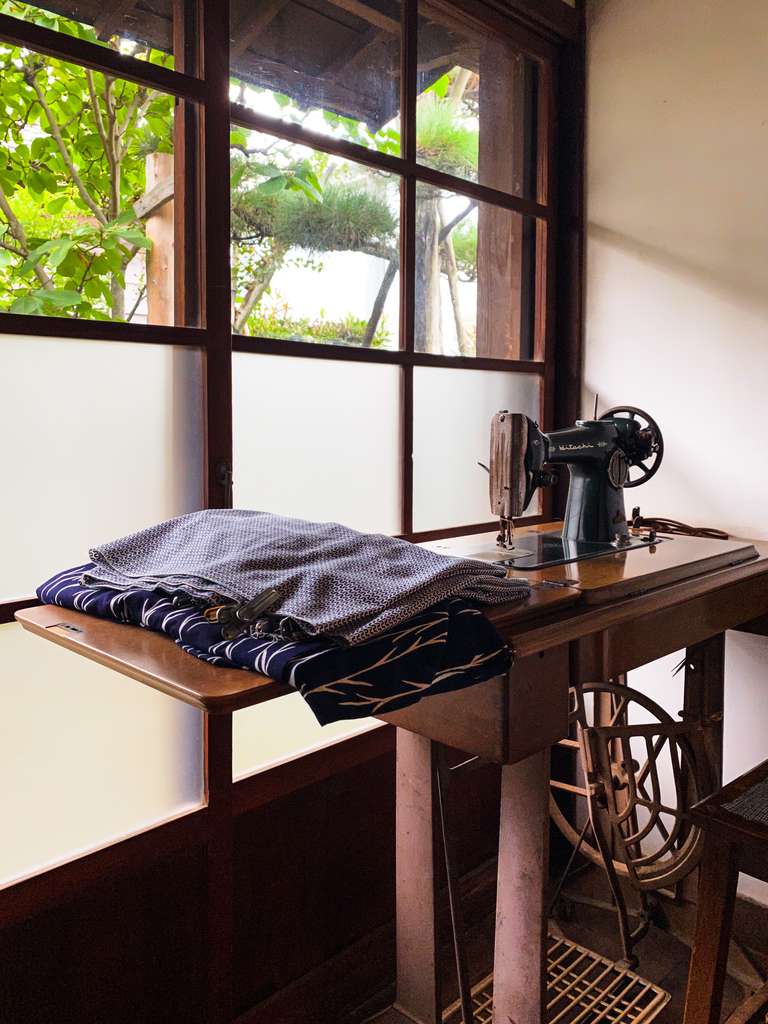
The museum also houses the cultural assets of Urayasu, including the tobacco shop, a fisherman’s house, and a Nagaya house, a precursor to modern-day urban apartment buildings. After touring the museum, visitors can stop by Café Restaurant Sutenpare for lunch, which offers clam-based dishes, including its signature menu item, clam rice (asari meshi) set meal. The restaurant is also designated as a facility that employs and trains workers with disabilities. Despite Urayasu’s transformation, the Urayasu City Folk Museum remains a hidden gem of antiquity located within the sprawl of urban Tokyo, offering visitors a glimpse into Japan’s past and rich cultural heritage.
Avatar Robot Café DAWN ver.β: Robotic Technology with the Most Humane Twist in Tokyo
I’m in the heart of Tokyo’s bustling Nihonbashi district, and a small robot cheerfully greets me with my name on the screen of a tablet. I’ve arrived at the Avatar Robot Café DAWN ver.β, where I’ve booked an OriHime Seat to be completely served by cute robots. The process is not at all different from a normal cafe restaurant. After being seated at my table, another robot explains the available menu options which I can choose myself from a tablet. We’re having a nice conversation in the meantime and everything seems equally delicious so I ask my robot server for recommendations.
While I wait for my order, we continue chit-chatting about miscellaneous stuff. In the meantime, another robot approaches me to bring some water and join in the fun conversation to snap a pic together. As a Spaniard myself, these casual interactions between strangers are the highlight of this place. Because here’s the thing: I haven’t been speaking to machines during my entire stay. I’ve been interacting with people the whole time, the human pilots that control these robots remotely.
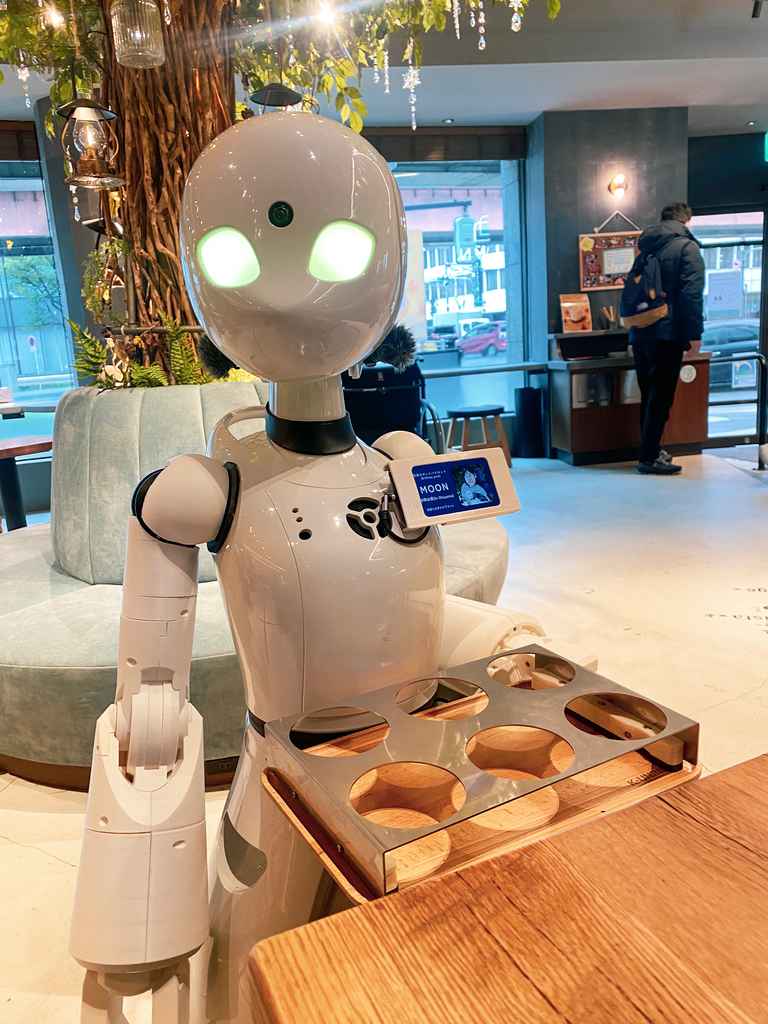
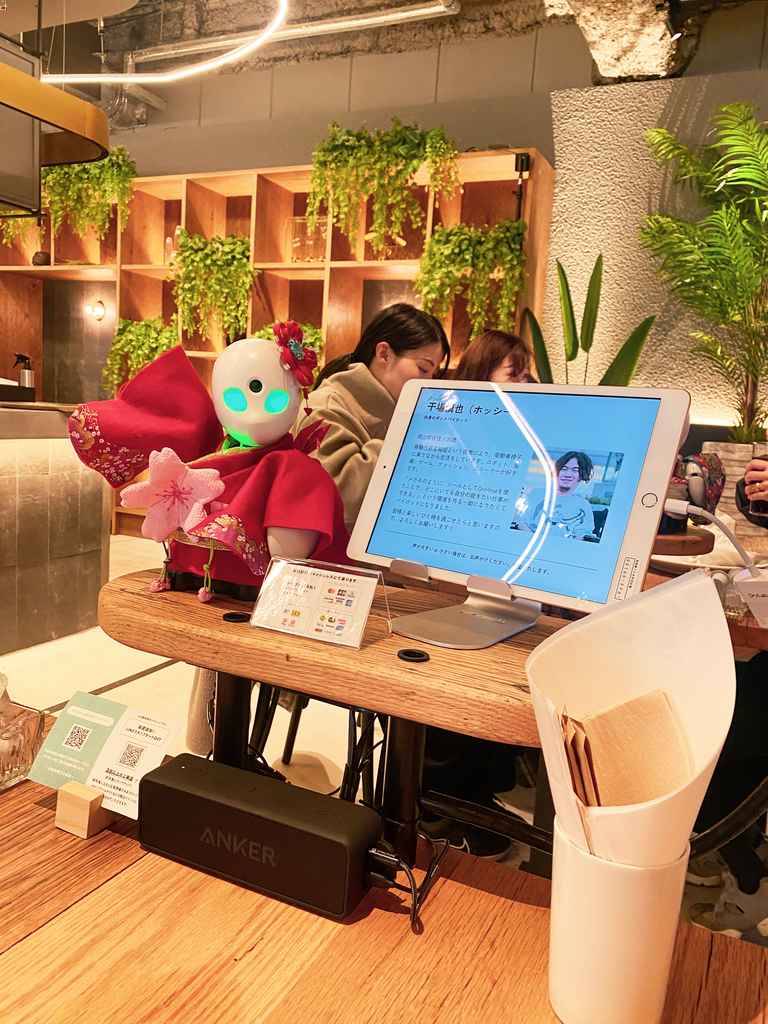
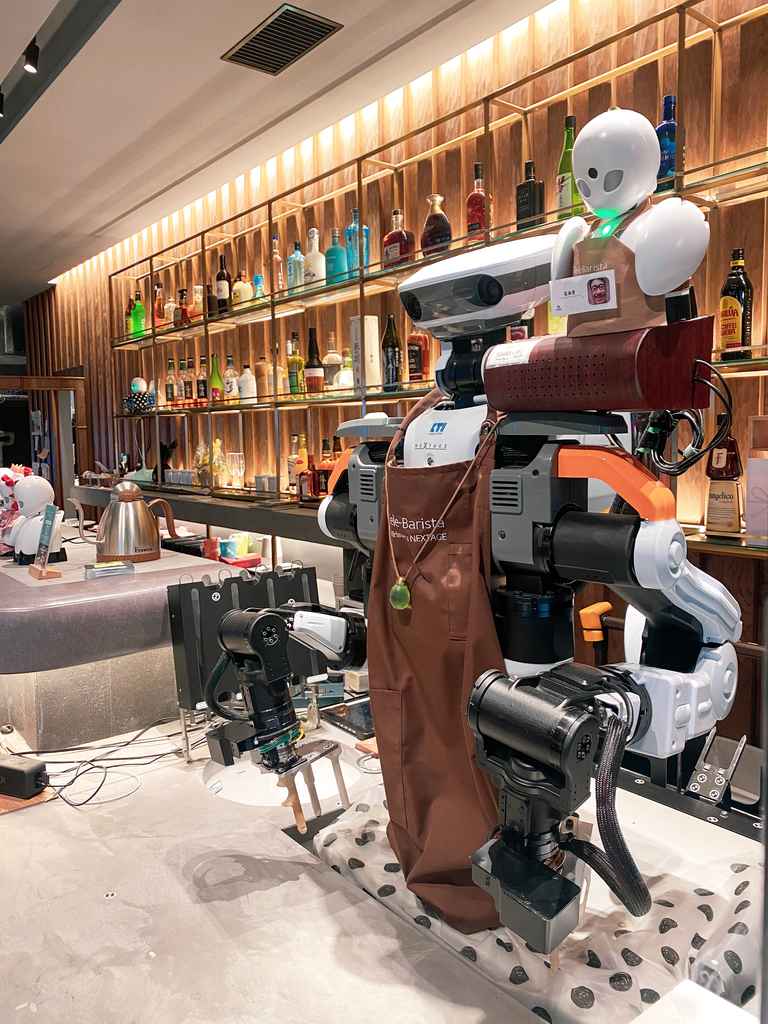
For decades, Japan has had a special relationship with robots. They’re a staple of some of the most recognizable works of Japanese fiction and pop culture. Japan is famous for having the highest number of robots in the manufacturing industry. But in recent years, robotics and automation have acquired a more ambivalent reputation, with fears of job loss and societal displacement. That’s what makes the Avatar Robot Café so remarkable. Here, robots aren’t replacing humans; they’re helping bridge the societal function gap for people with ALS or other disabilities. The cafe employs staff with disabilities and utilizes avatar robots, models OriHime and OriHime-D, to allow them to work remotely.
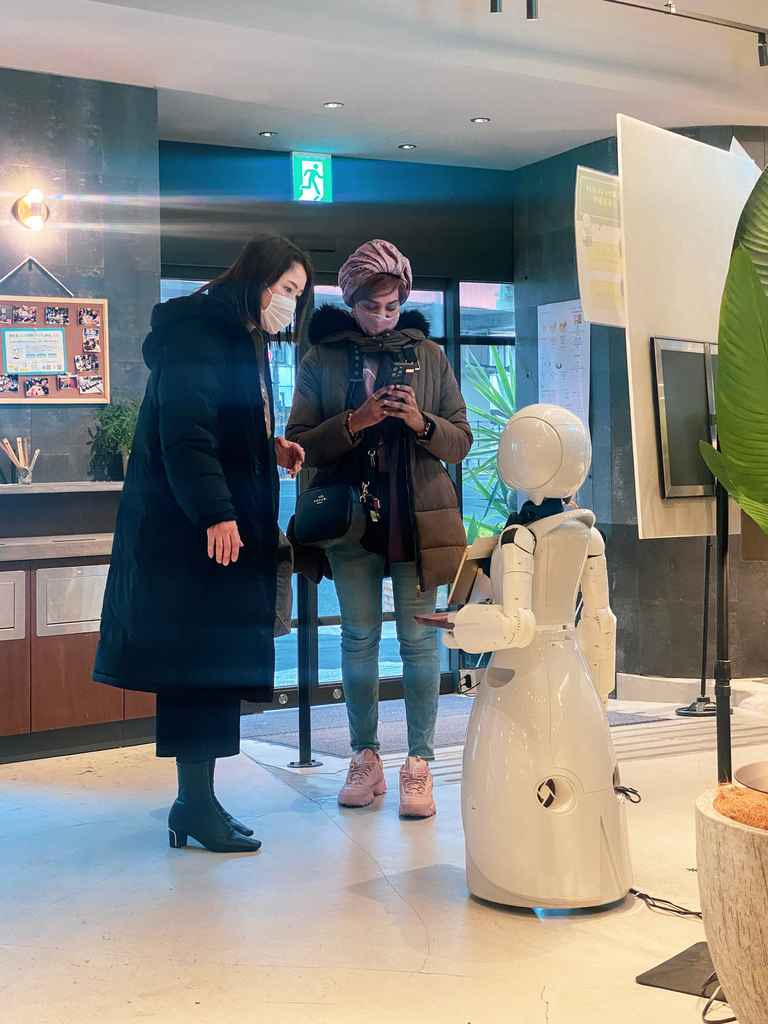
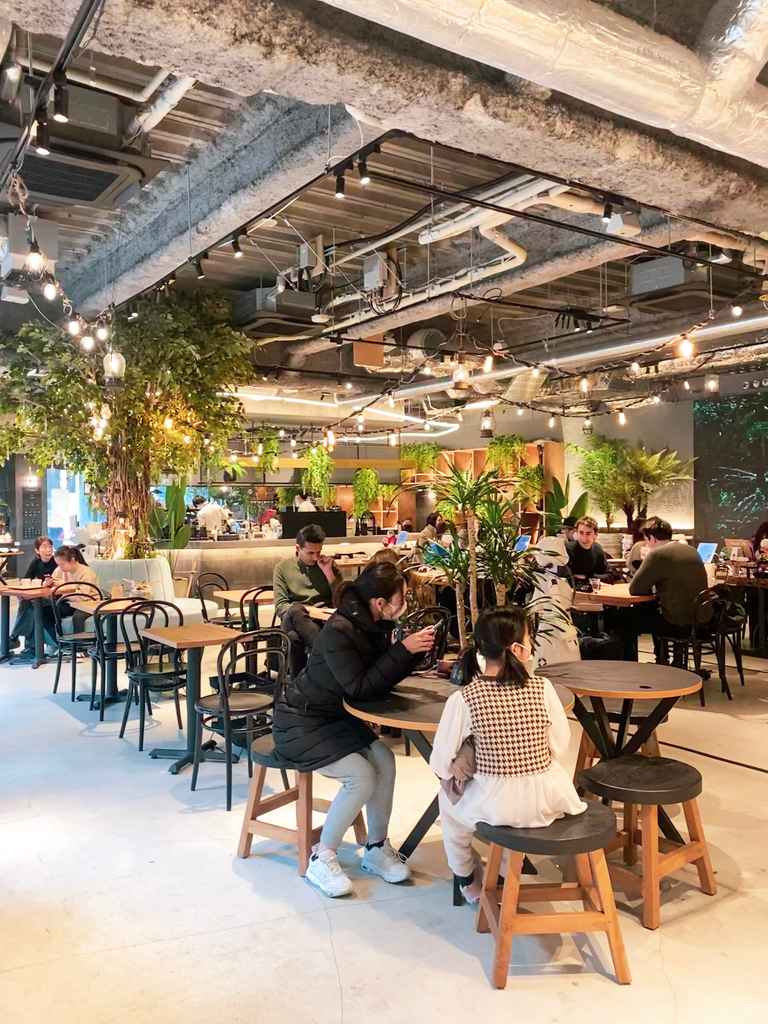
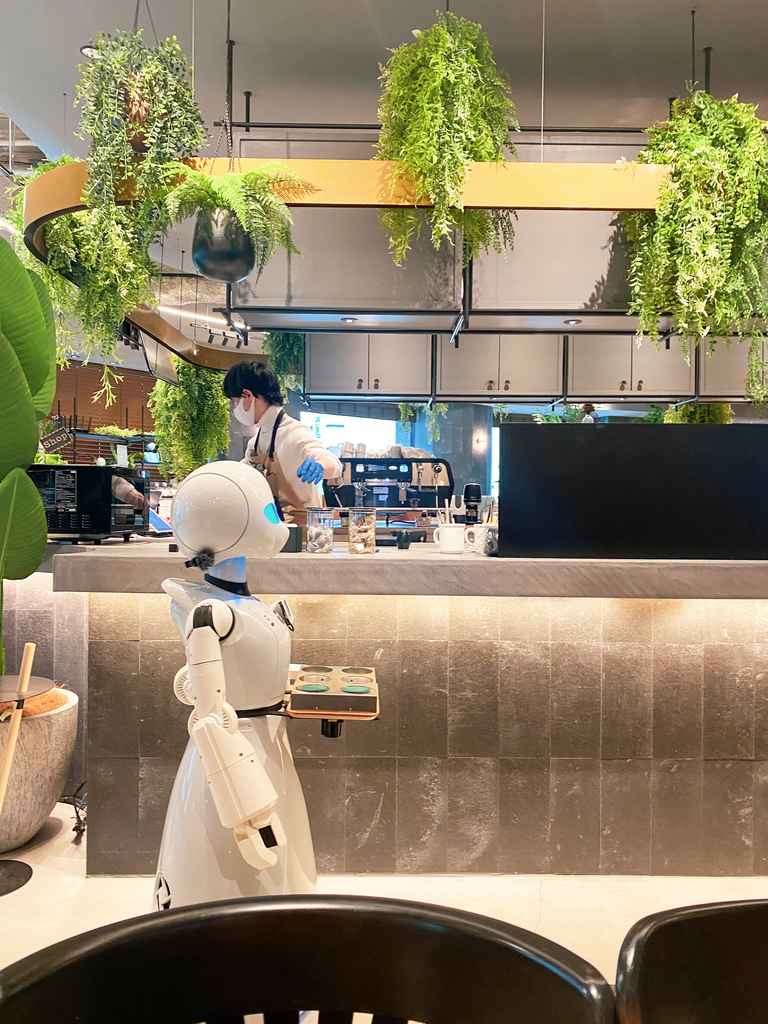
But it’s not just about productivity or creating jobs for those with disabilities. The café offers a fun and casual space for people to interact with one another. This creates an inclusive environment where informal chat and interaction are encouraged between clients and robot pilots while enjoying a delicious meal or a relaxing coffee break. It’s an exciting way to use technology to break down barriers and create a more inclusive society.
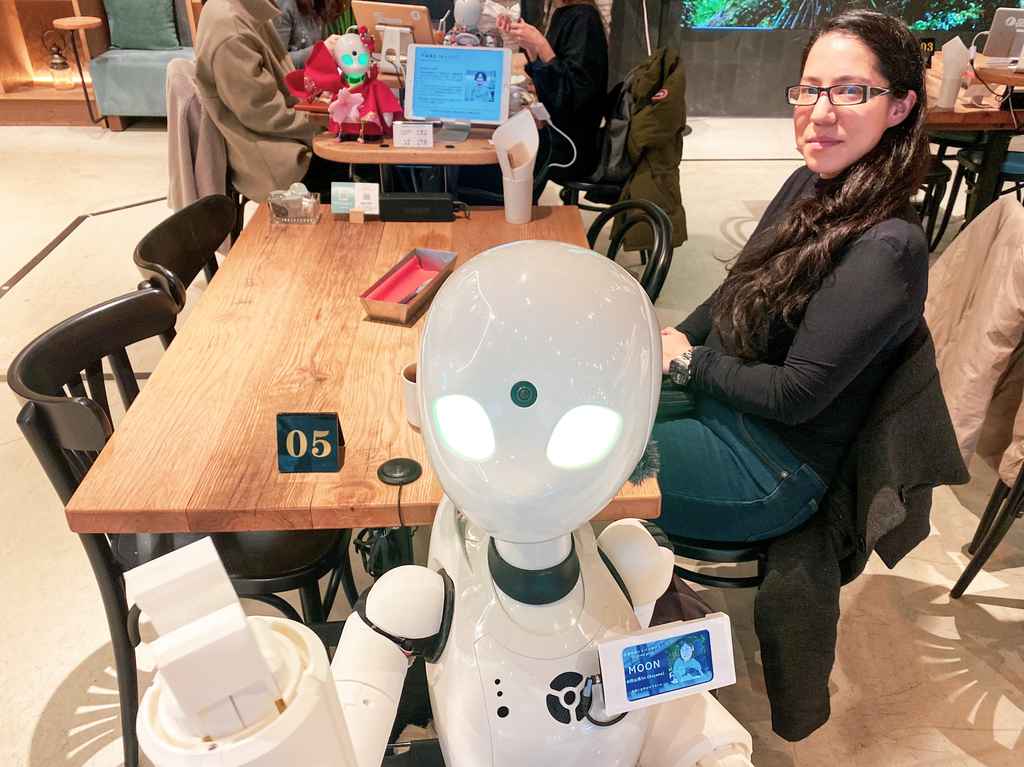
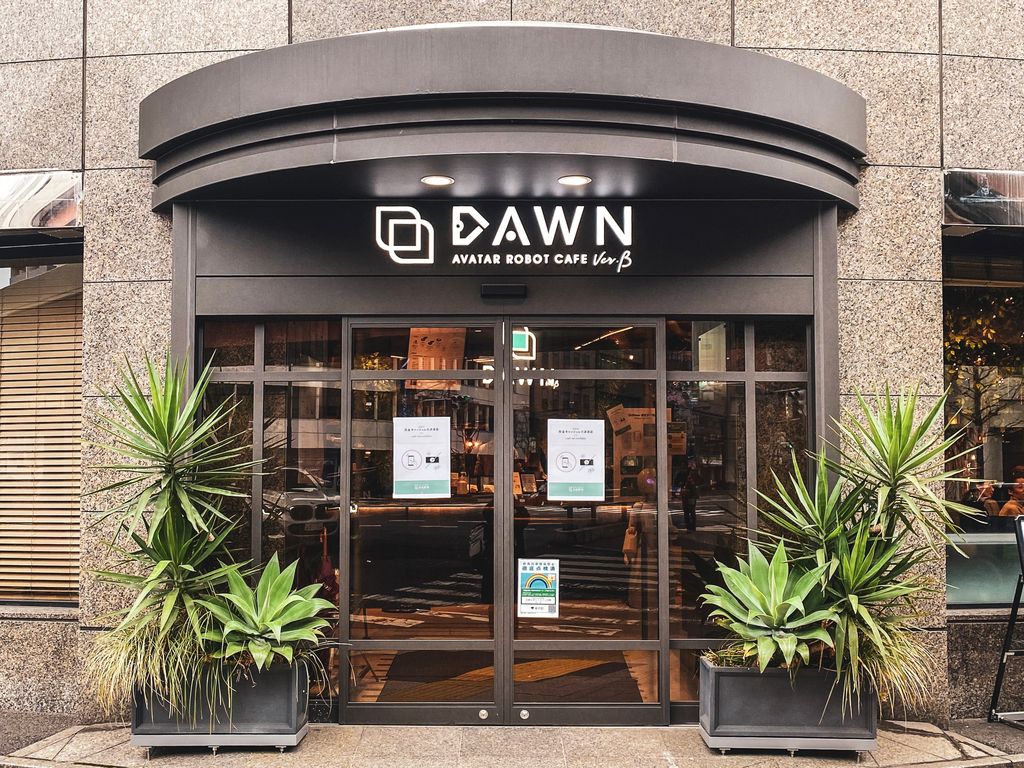
I asked my server, who works remotely from Okayama, what the best part of his job was. He explained he’s been working for about a year and that talking to various people was truly enjoyable. The café is where limitations are overcome with technology, and people from all walks of life can come together and enjoy each other’s company. After a while, he has to leave me as he needs to attend to other clients, and so we part ways but not before I promise I will definitely return with friends.
Sankeien Garden: The Timeless Cultural Legacy in Kanagawa Prefecture
There is no shortage of splendidly designed Japanese gardens in Japan. And yet, once you step into Sankeien Garden (三溪園), something feels different. A peaceful and harmonious strolling park, far from the grandiosity that one would attribute to a place seemingly built to display the vast wealth of the owner. In this case, the silk merchant who designed it even went as far as to relocate historic buildings from other regions such as Kyoto or Gifu. But a closer look into the garden’s history reveals a fascinating tale about the founder, Hara Sankei (原三溪, 1868-1939). A wealthy businessman and patron of emerging artists, he created a garden renowned for its beauty and efforts to preserve cultural heritage. Remarkably, it wasn’t simply about his enjoyment but about sharing this priceless cultural heritage with the general public.
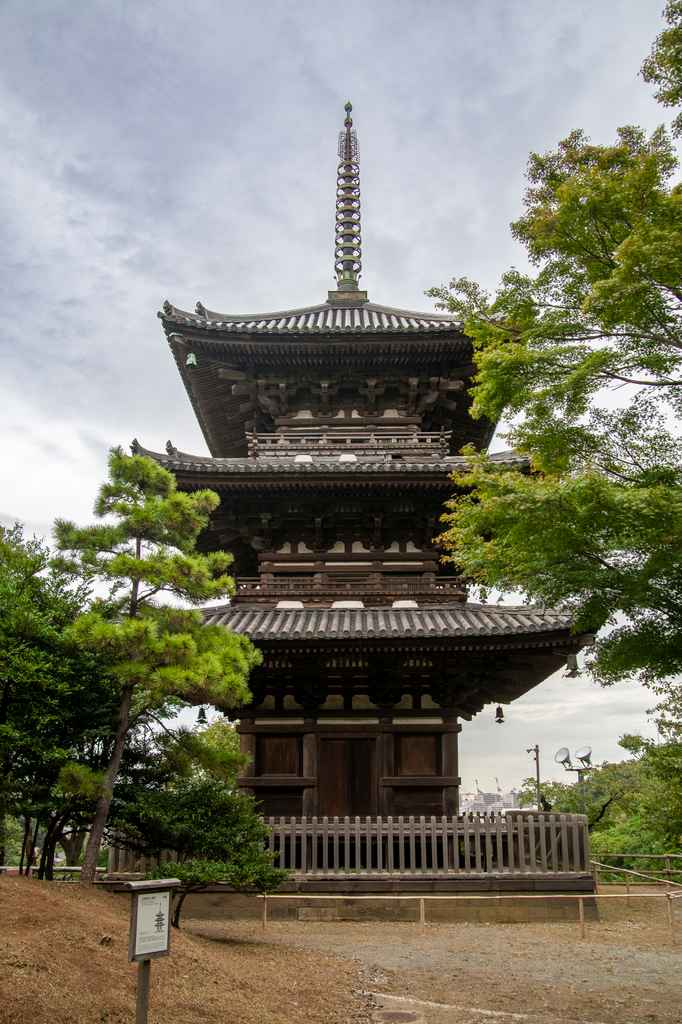
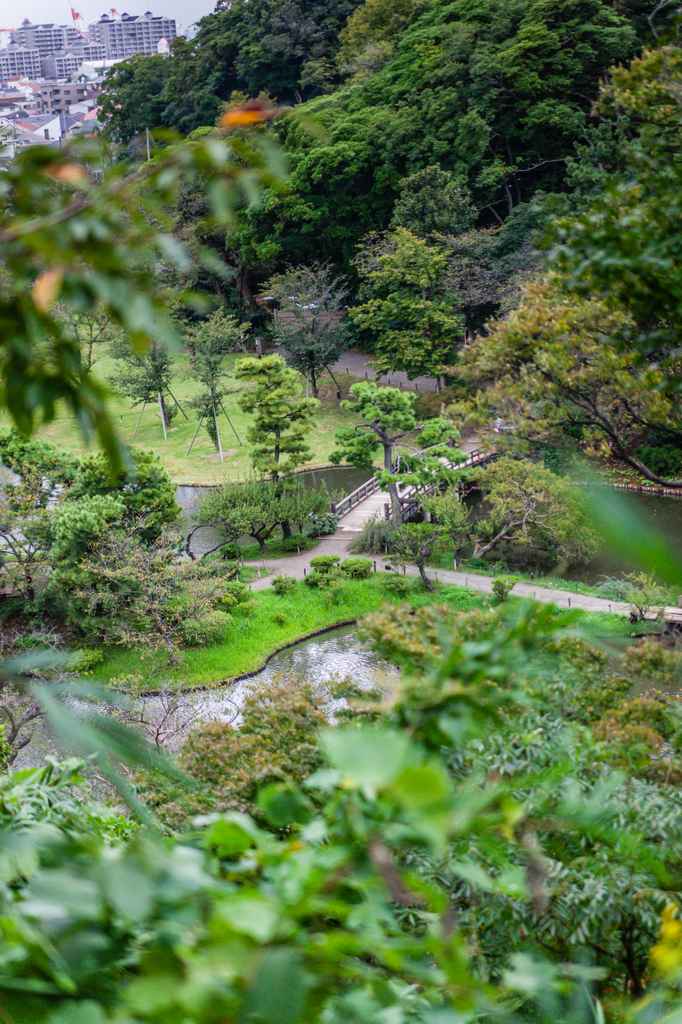
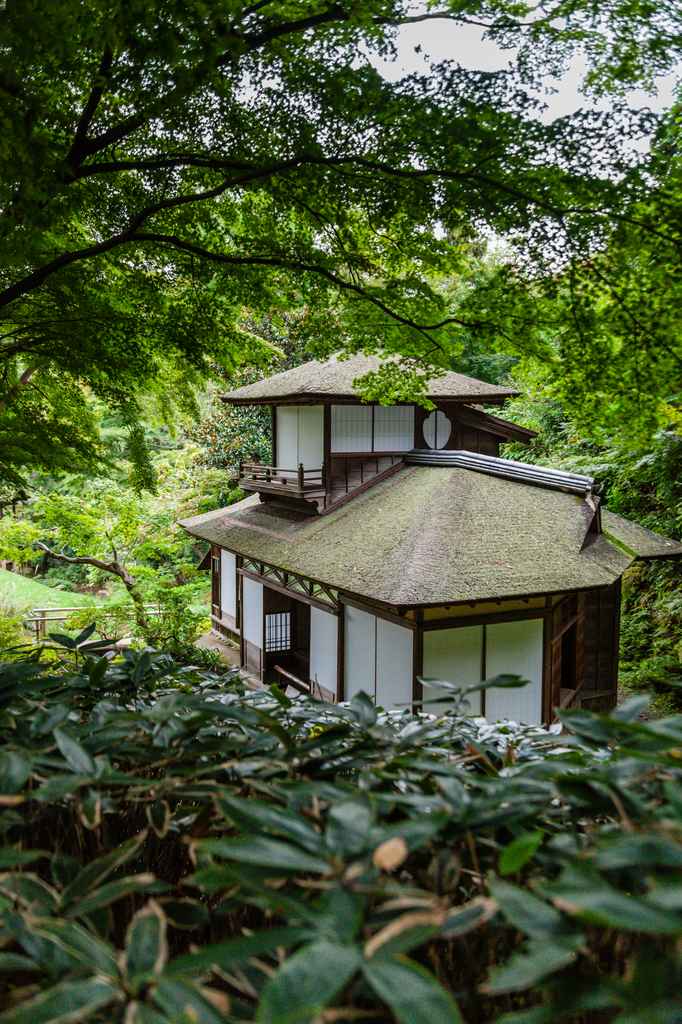
A vast space spanning 175,000 square meters, it features 17 buildings, ten designated as important cultural properties by Japan. Hara’s own residence was located on these same grounds but kept private while the outer gardens were open free of charge to the public in 1906 (although the entire garden wouldn’t be completed until 1922). It quickly became a popular leisure spot for locals, and in a city known for its strong influence from Western culture, Sankeien was a great bastion of traditional Japanese beauty.
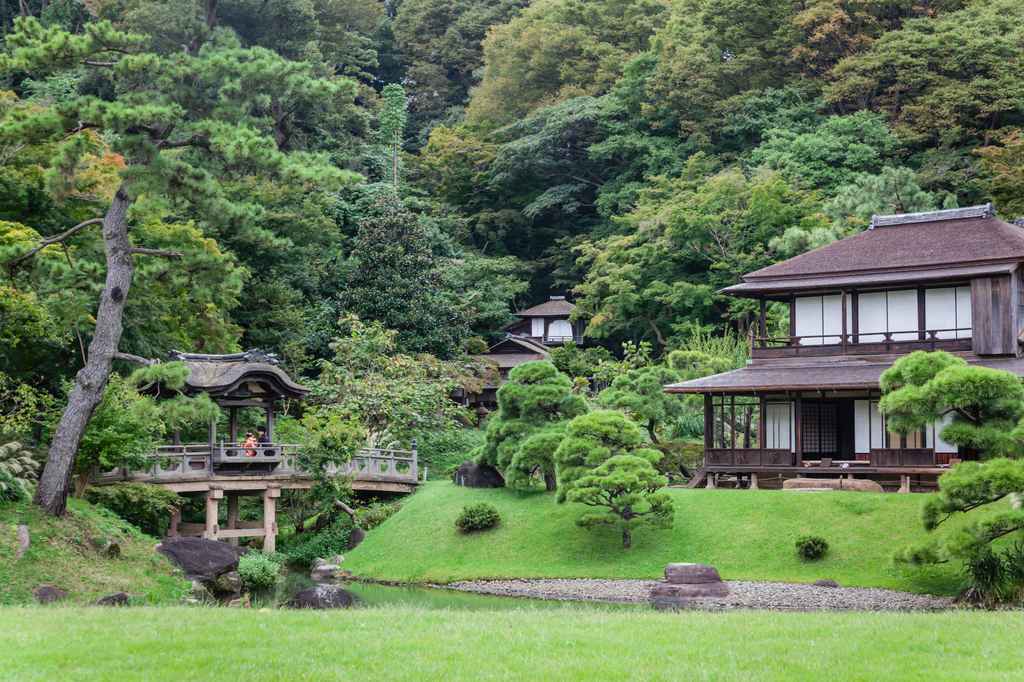
Sankeien was also a center where high culture was nurtured. Kakushokaku, Hara’s private residence, was not only the family home but also a venue where Hara displayed his numerous artworks and held a salon for the avant-garde artists of the time. Shofukaku, a building above the garden near the pagoda, is where Rabindranath Tagore, the Indian poet, writer, and social reformer and the first Asian recipient of the Nobel Prize in Literature, spent two and a half months in 1916 and composed his book of poems Stray Birds.
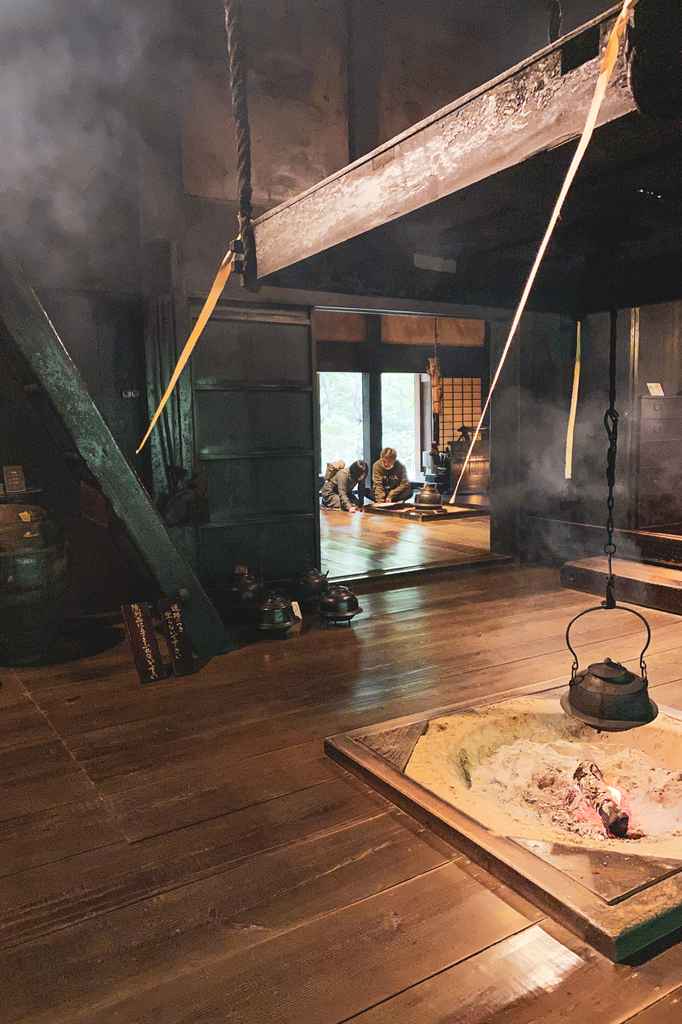
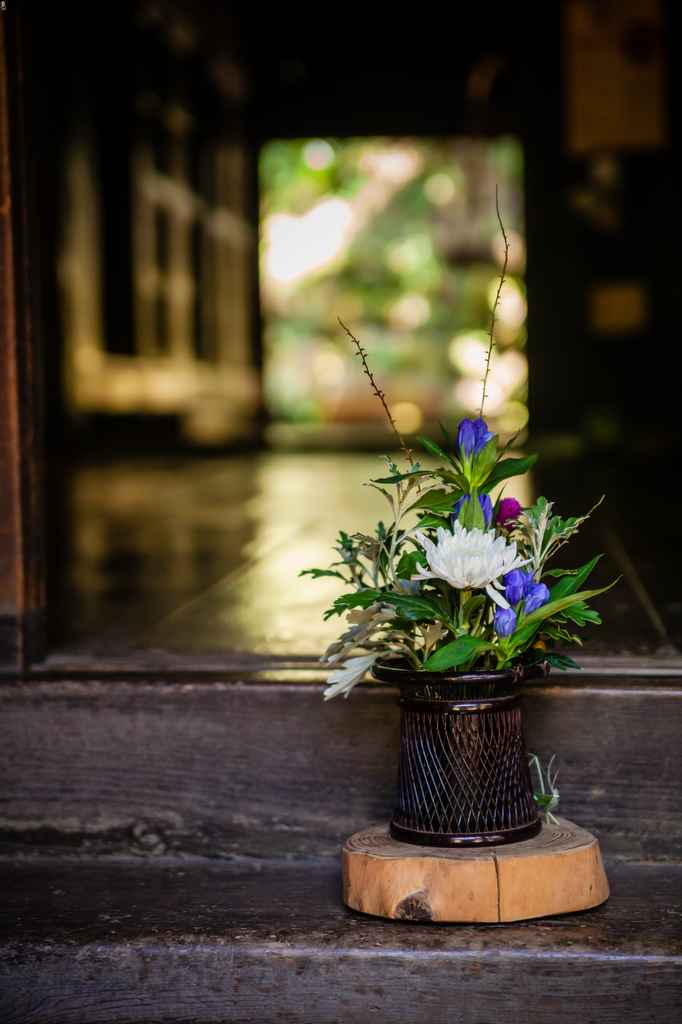
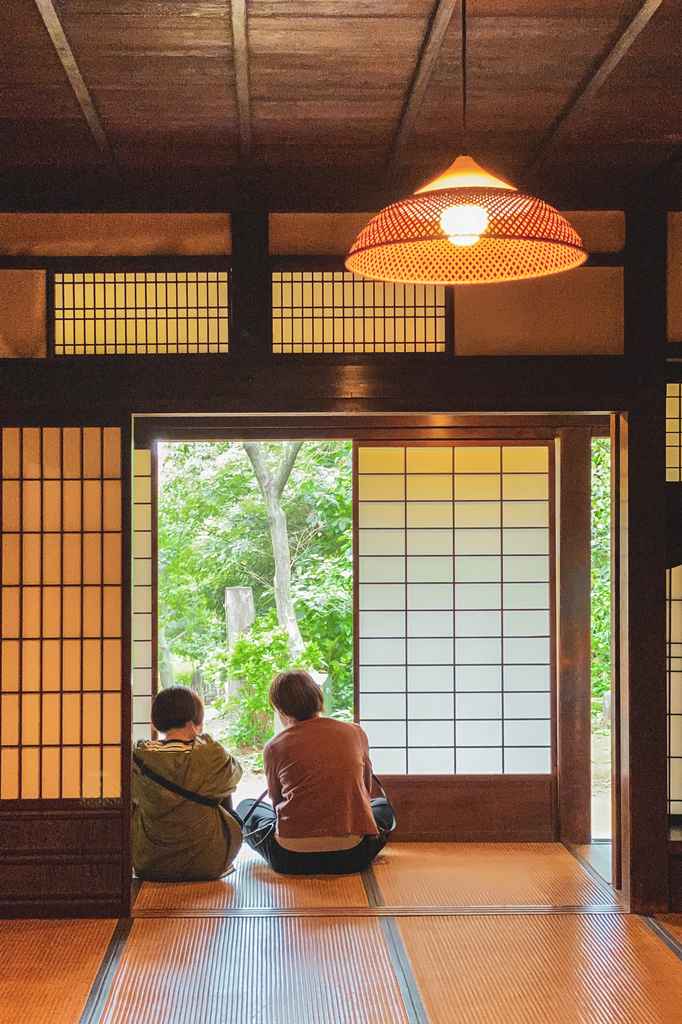
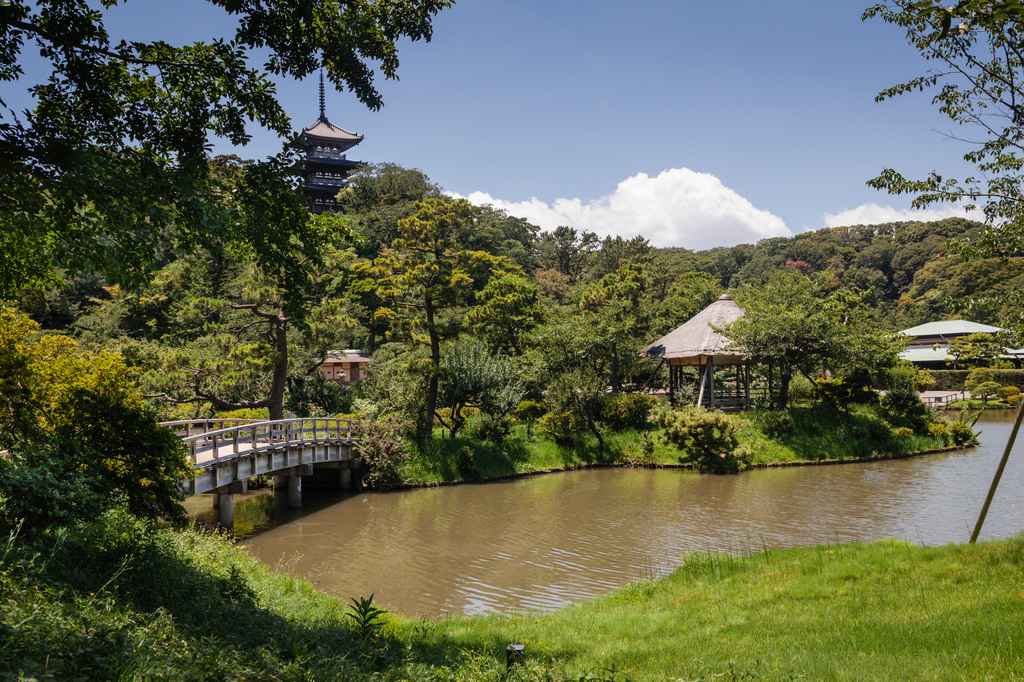
Although the garden faced damage from the Great Kanto Earthquake in 1923 and World War II, it was eventually donated to Yokohama in 1953. After five years of restoration work, the garden fully reopened to the public in 1958. Sankeien is a testament to Hara’s legacy and a site for the public’s relaxation while also stimulating the creative appetite of many artists he associated with.
Use the JR Pass to Save Money On Your Trip
Many destinations in and around the Kanto area, including these, can be reached using JR trains. If you plan to travel outside of the Tokyo area on public transportation, consider using these discount transportation passes to save money during your trip to Japan.
For travel to and within Saitama, Chiba, Tokyo, and Kanagawa, consider the JR TOKYO Wide Pass, with three days of unlimited travel on many train lines within the area. Note that this pass can be used by foreign passport holders living in Japan as well as overseas visitors.
Each one of these places represents an acknowledgment of the historical and cultural significance of the places we visit, and a work in progress to preserve their legacy or create a better future. The kind of places that are making a difference. When you, as a visitor make a conscious choice to visit these places, you are also helping them to continue making a positive impact in their local communities, and you will be left with the satisfaction of having scratched beyond the surface and fostered genuine connections as part of your journey.
Be sure to check out our other articles about more of the best examples of sustainable tourism in and around Tokyo:
The Best Examples of Sustainable Tourism in Fukushima, Tochigi, Ibaraki, and Gunma
The Best Examples of Sustainable Tourism in Yamanashi, Nagano, and Niigata
If you find these unique destinations intriguing, you’ll find them all and many more on the social media accounts of Tokyo and Around Tokyo. Join us on Facebook and Instagram to explore more of the endless possibilities in sustainable tourism and beyond.
Sponsored by Tokyo & Around Tokyo Promotion Council


